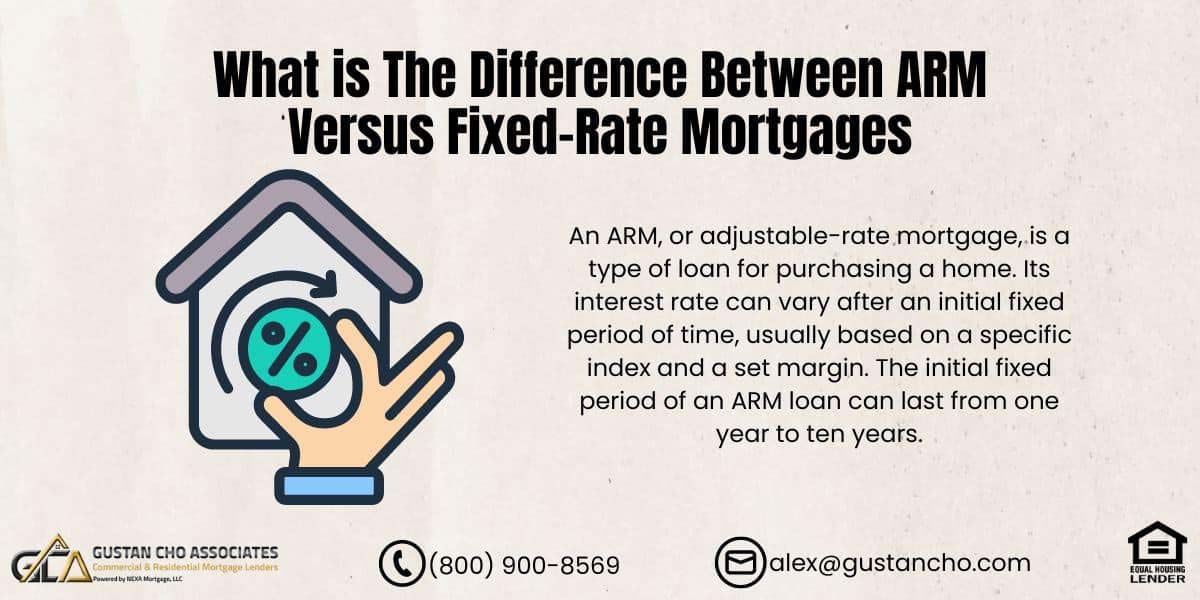
Lilly
OtherForum Replies Created
-
Check out this short video clip about a German Shepherd dog 🐕 getting locked out of the gate
https://www.facebook.com/share/r/5Vnb2N5WAKNHugdF/?mibextid=D5vuiz
facebook.com
The homeowner was driving away when his dog got stuck outside the house #narrative #stories #usa. Spooky Narratives · Original audio
-
Whichever does not give me a headache. I like red wine but I think it gives me a heavier hangover than white.
-
Lilly
MemberMay 15, 2024 at 4:54 pm in reply to: Can I Get a Mortgage While in a Chapter 13 BankruptcyHomebuyers can get a mortgage while in a Chapter 13 Bankruptcy repayment plan. VA and FHA loans are the only mortgage programs that allow borrowers to get a mortgage during an active Chapter 13 Bankruptcy. Navigating the process of buying a house during a Chapter 13 bankruptcy can be complex, but it is not impossible. Here’s how Chapter 13 bankruptcy affects your ability to purchase a home and the options available:
Buying a House During Chapter 13 Bankruptcy
-
Lender Approval: Some mortgage lenders may consider providing a loan to someone currently in a Chapter 13 bankruptcy plan, but they will require authorization from the bankruptcy court. You’ll need to get approval from the court to incur new debt.
-
Waiting Period: Generally, you must have made at least 12 months of on-time payments as per the Chapter 13 payment plan. Additionally, you need the bankruptcy trustee’s approval, which shows that you’ve been making regular payments and can afford the additional loan responsibility.
-
FHA Loans: Yes, you can qualify for an FHA loan while in Chapter 13 bankruptcy, under certain conditions. You need to have made at least one year of plan payments on time, and you’ll need a letter from the trustee giving you permission to incur new debt.
-
VA Loans: Yes, you can qualify for a VA loan while in Chapter 13 bankruptcy, under certain conditions. You need to have made at least one year of plan payments on time, and you’ll need a letter from the trustee giving you permission to incur new debt.
-
Manual Underwriting: VA and FHA loans in these situations usually require manual underwriting, where an actual person assesses your creditworthiness, rather than using automated processes. This underwriter will look at your overall financial situation, including your payment history under the bankruptcy plan.
After Completing Chapter 13 Bankruptcy
-
FHA, VA, and USDA Loans: For FHA and USDA loans, you are eligible to apply for a mortgage as soon as one year after discharge. VA loans require a two-year wait after discharge.
-
Conventional Loans: For conventional loans, the waiting period is typically four years after discharge. However, if the bankruptcy was dismissed (rather than discharged), the waiting period can extend to seven years.
-
Rebuilding Credit: It’s crucial to focus on rebuilding your credit post-bankruptcy by making timely payments on any remaining or new debts. This will increase your chances of getting approved for a mortgage with favorable rates.
Strategies for Approval
- Steady Income: Show stable and sufficient income to handle your current debts, your living expenses, and your prospective mortgage payment.
- Down Payment: Save for a substantial down payment to lower the risk for the lender and improve the terms of your mortgage.
- Financial Counseling: Consider undergoing credit counseling or financial planning to bolster your financial standing and credibility in the eyes of the lender.
- Buying a house while in Chapter 13 bankruptcy is challenging but achievable with the right planning and court approval. Post-bankruptcy, there are more straightforward paths to obtaining a mortgage, particularly through government-backed loans which tend to have more lenient requirements compared to conventional loans.
Here is an article about buying a house while in a Chapter 13 bankruptcy:
https://gustancho.com/buy-and-sell-a-house-while-in-chapter-13-bankruptcy/
gustancho.com
How to Buy and Sell a House While in Chapter 13 Bankruptcy
Borrowers can buy and sell a house while in Chapter 13 Bankruptcy one year after filing date with no late and trustee approval on VA and FHA loans.
-
-
Will mortgage rates ever go back down to the 3.0% level or is this 7.5% mortgage rates the new norm?
-
How long after an insurance claim will your insurance premium be high?
-
Lilly
MemberApril 25, 2024 at 6:29 pm in reply to: Stress Management: How to Relieve and Reduce StressI was always interested in the topic of stress management for over ten years. I know for a fact that stress expedites the aging process and is the cause of many illnesses. From what I learned over the years stress management refers to the techniques and practices that individuals use to control their body’s response to stress, reduce its negative effects, and enhance their well-being and functioning. Stress is a natural physical and mental reaction to life experiences, and everyone experiences stress from time to time. However, excessive or chronic stress can be harmful, leading to serious health problems, including anxiety, depression, cardiovascular disease, and a weakened immune system.
Techniques for Stress Management
Effective stress management helps you break the hold stress has on your life, so you can be happier, healthier, and more productive. Here are some commonly used stress management techniques:
-
Regular Exercise: Physical activity increases the production of endorphins, which are the brain’s feel-good neurotransmitters. Exercise also helps you take your mind off your problems and can improve mood and sleep.
-
Mindfulness and Meditation: These practices involve focusing your mind on the present moment and can help you gain perspective on stressful situations. Techniques include breathing exercises, meditation, and yoga.
-
Proper Nutrition: Eating a healthy, balanced diet can help combat stress. Some foods have natural anti-anxiety effects, while others can boost levels of stress hormones. Avoiding excessive caffeine and sugar is also beneficial.
-
Adequate Sleep: Stress often affects sleep quality and duration. Improving sleep routines — going to bed at a regular time, ensuring the bedroom is conducive to sleep, and avoiding screens before bed — can improve how you feel during the day.
-
Time Management: Effective time management can help you prioritize tasks and reduce last-minute rushes that may cause stress. Techniques include setting realistic goals, breaking tasks into smaller steps, and using a planner or digital calendar.
-
Social Support: Having a strong social network can act as a buffer against stress. Talking with friends and family can provide emotional support and help you see problems in a new light.
-
Relaxation Techniques: Activities like deep breathing, massage, sauna, and listening to relaxing music can reduce physiological symptoms of stress by slowing heart rate and lowering blood pressure.
-
Cognitive Behavioral Techniques: These involve rethinking challenging situations to reduce stress and anxiety. Techniques include identifying negative thoughts and replacing them with more positive ones.
-
Professional Help: When personal efforts to manage stress aren’t enough, it might be helpful to seek help from a psychologist or counselor, who can provide tools and techniques to manage stress effectively.
Importance of Stress Management
Managing stress is crucial not just for emotional well-being but also for physical health. Unmanaged stress can lead to:
- Decreased immune function
- Heart problems, including hypertension and abnormal heart rhythms
- Digestive problems
- Obesity and other eating disorders
- Menstrual problems
- Acne and other skin problems
Implementing stress management techniques into your daily life can help maintain both your physical and mental health. It’s important to experiment with these techniques and find what works best for you, as stress management is highly individualized. Here is a video I watched and found it very informative:
-
-
Many homebuyers in California are priced out of the housing market in most counties in the state. Between surging home prices, out of control inflation, and historic high mortgage rates, borrowers of home purchase and refinance loans should shop for the best mortgage rates in California. Not all mortgage lenders have the same rates and terms on FHA, VA, USDA, conventional, jumbo, and non-prime loans. Here is an informative blog about shopping for mortgage rates published on Gustan Cho Associates that folks may find it helpful when shopping for rates in California.
https://gustancho.com/shopping-for-best-mortgage-rates/
gustancho.com
Shopping For Best Mortgage Rates in California
When shopping for best mortgage rates in California, borrowers need to watch for lenders that bait and switch consumers from advertisements.
-
Lilly
MemberApril 17, 2024 at 4:52 pm in reply to: What is the Difference Between and ARM and Fixed Rate Mortgage LoansAdjustable-rate mortgages may benefit first-time homebuyers or homebuyers who do not intend in the home they are purchasing for longer than three to seven years. The main differences between adjustable-rate mortgages (ARMs) and fixed-rate mortgages are:
- Interest Rate:
- Fixed-rate mortgages have an interest rate that remains the same for the entire loan term, typically 15 or 30 years.
- Adjustable-rate mortgages have an interest rate that can change periodically, usually based on a benchmark index plus a predetermined margin.
- Predictability:
- Fixed-rate mortgages provide more predictability, as the monthly payments remain the same throughout the loan term.
- Adjustable-rate mortgages have less predictable monthly payments, as the interest rate and payment can fluctuate over time.
- Initial Interest Rate:
- ARMs often have a lower initial interest rate compared to fixed-rate mortgages, which can make them more appealing in the short term.
- However, the interest rate on an ARM can increase significantly over time, leading to higher monthly payments.
- Loan Term:
- Fixed-rate mortgages are typically available in 15-year, 30-year, or 20-year terms.
- ARMs often have shorter initial fixed-rate periods, such as 5, 7, or 10 years, before the rate begins adjusting periodically.
- Risk Profile:
- Fixed-rate mortgages provide more stability and protection against rising interest rates, but offer less flexibility.
- ARMs transfer more of the interest rate risk to the borrower, as their monthly payments can increase if rates rise.
- Refinancing:
- It may be easier to refinance a fixed-rate mortgage, as the rate and terms are more predictable.
- Refinancing an ARM can be more challenging, as the changing interest rate and loan terms can make it difficult to qualify for a new mortgage.
The choice between a fixed-rate or adjustable-rate mortgage often depends on the borrower’s financial situation, risk tolerance, and expectations for future interest rate trends. ARMs may be more suitable for borrowers who expect to move or refinance before the initial fixed-rate period expires, while fixed-rate mortgages provide more long-term stability.
-
This reply was modified 4 months, 1 week ago by
 Sapna Sharma.
Sapna Sharma.
gustancho.com
ARM Versus Fixed-Rate Mortgages
ARM versus fixed-rate mortgages are ideal for first time homebuyers who purchase starter homes and planning on refinancing in 5 to 10 years




